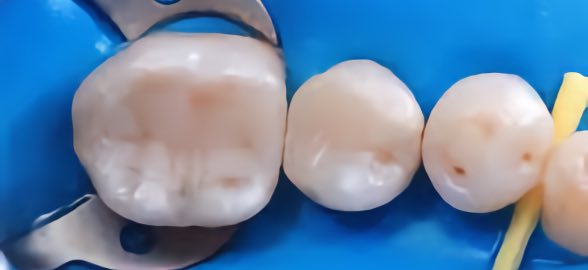The new course begins in the faculties of dentistry and already begin to arrive lists of materials for studies and many doubts that arise among students about what kind of tools to buy. Don't worry! We at Dentaltix can help you!
To guide you a little, we have summarized the main questions at the time of purchase. Let's look at the main questions that dental students may have: how to choose a rotating kit, what will be needed in the practice, the characteristics of each piece and what should be taken into account.
What tools will we find in a rotary kit?
In each rotating student instrument you will normally find 4 elements: a handpiece, a contra-angle, a turbine and a micromotor. We can also distinguish them as high and low speed tools.
High-speed instruments include the Turbine, and low-speed instruments include the handpiece, the contra-angle handpiece and then the micromotor.
The turbine is connected directly to the hose of the dental equipment. While the handpiece and contra-angle handpiece are connected to the micromotor (which in turn is connected to the equipment hose) to be able to work.
Inside the rotating tools we can find a wide variety of features and different technical descriptions that differentiate each element. To know the main concepts, here is what to consider in each tool.
Turbine
- Hose connection: The turbine can be connected directly to the hose (simply by screwing) or with a quick coupling (one click), for which an additional connection part included in the kit is required. Find out what your university's equipment hose looks like to make sure it's compatible.
- Button system: When you open the turbine clamp by pressing a button, it is important to note whether it is soft or hard. The softness will make it easier for the wearer and prevents possible future damage.
- Body:The smoother it is, the easier it is to clean effectively.
- Light: In the turbine depends on the needs of each to choose with or without light.
- Irrigation: The ideal standard is 3 or 4 spray holes, if there are fewer holes we can generate incorrect irrigation and if we have more than 4 holes we can cause problems when there are obstructions.
- Sound level: What interests us is that it generates the lowest sound level, prolongs the life of the engine and that the lubricant remains in the bearing. It is important that the turbine has the ceramic ball bearing, it is usually the most standard, and in forty thousand revolutions the ball bearing is good.
Micro-motor
How do I know which micromotor to choose?
The micromotor is a tool that connects the hose to the contra-angle or handpiece. Through the element enters the air that will rotate it and then will also rotate the elements connected to it.
The micromotors can be pneumatic or electric, one can reach up to twenty thousand laps and the other will work respectively from forty thousand laps. For this reason, Alejandro explains that at university it is always convenient to have the standard tyre, both for the price and for the use that you will give him.
The most important thing to keep in mind about this element are the transmissions. For each turn of the micromotor, the connected part will give another or more. If we have a 1:1 transmission type for example, for each turn of the micromotor, the handpiece or contra-angle will give one. With the 1:2 transmission type, for each revolution that the micromotor makes, the other instrument will make 2 turns, and so on with the other types of transmissions. Usually we can adjust the micromotor speed.
Handpiece
- Connection: The connection is related to the theme of light. The optical fiber of the handpiece must be aligned with the light bulb of the micromotor. For this reason, if we have a handpiece without light, there are no problems connecting with the micromotors. However, if we have a handpiece with light, it cannot be connected to a micromotor without light. In most cases, it is better for students to have a handpiece at low speed without light.
- Irrigation: According to Alexander, the standard would be internal irrigation, although the university handpiece is used for out-of-mouth retouching.
Contractor
- Light: Being connected to the micromotor, the contra-angle handpiece has the same connection and light characteristics as the handpiece.
- Irigation: The standard is usually internal irrigation.
- Separability of the head: it is very important to keep in mind thatthe head of the contra-angle handpiece concentrates most of the failures. For this reason it is strongly recommended to purchase at least two individual contra-angle heads. Thanks to the possibility of separating the head, we can also do a better maintenance and cleaning of the instrument. The contra-angle handpiece MK-Dent is compatible with all Kavo heads.
Our recommendations:
If after this article, you still have doubts about the ideal tool for your new beginning of classes,we strongly recommends the kits MK-Dent Kits. Within the variety of that brand, the student can already see which one best suits his needs.
However, if you are looking for cheaper kits, we can also offer the brand Rumar.
- Connection: Midwest with four holes is the most suitable.
- Light: keep in mind that if you want with light, the number of holes goes to 6 and can not connect to the hose of the armchair. If the hose is with light and the micromotor is delivered without light, there are no problems in the connection. However, if the hose is without light and the micromotor comes with light pins, it will not work.
- Irrigation: Micromotors with internal irrigation are the most commonly used in clinics and external irrigation is most used for surgery.
- Connection: The connection is related to the theme of light. The optical fiber of the handpiece must be aligned with the light bulb of the micromotor. For this reason, if we have a handpiece without light, there are no problems connecting with the micromotors. However, if we have a handpiece with light, it cannot be connected to a micromotor without light. In most cases, it is better for students to have a handpiece at low speed without light.
- Irrigation: According to Alexander, the standard would be internal irrigation, although the university handpiece is used for out-of-mouth retouching.
- Light: Being connected to the micromotor, the contra-angle handpiece has the same connection and light characteristics as the handpiece.
- Irigation: The standard is usually internal irrigation.
- Separability of the head: it is very important to keep in mind thatthe head of the contra-angle handpiece concentrates most of the failures. For this reason it is strongly recommended to purchase at least two individual contra-angle heads. Thanks to the possibility of separating the head, we can also do a better maintenance and cleaning of the instrument. The contra-angle MK-Dent that Alejandro shows us is compatible with all Kavo heads.
Other post-purchase tips:
To conclude with this brief explanation of the Rotary Instrument Kit products, we must not forget that the most important thing to consider is the after-sales service of the manufacturers.
When you purchase a product, we remain not only the price and description, but also the information of warranty, overhaul or maintenance offered by the brands of each instrument. MK-Dent always offers a service within 24 or 48 hours to resolve incidents with the materials.
Have more doubts about your rotating kits?
We hope this article has helped you clear up the doubts you, as a student, usually have when you buy your rotary instruments.
If you have any further questions about kits or any material for your studies, please do not hesitate to write to hello@dentaltix.com. Don't forget to visit our Student Kits section and all our student offers, you can also follow us on our social networks!






